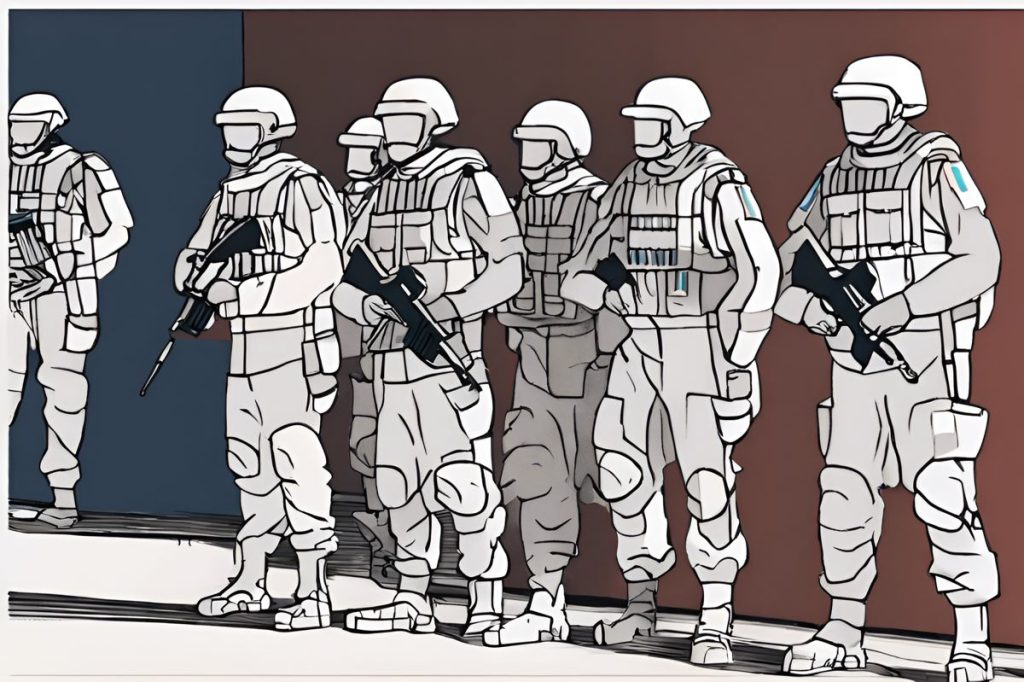With its roots in the bloody Christmas of 1963, the UN Peacekeeping Force in Cyprus (Unficyp) marks 60 years of maintaining peace along the buffer zone. From a temporary mission to the longest-running UN peacekeeping operation, Unficyp’s presence in Nicosia serves as a reminder of the island’s divided past and the ongoing struggle for reconciliation.
What is the role of UN Peacekeeping Force in Cyprus (Unficyp)?
The UN Peacekeeping Force in Cyprus (Unficyp) has been maintaining peace along the buffer zone since the island’s division. Established in 1964, its current role involves preventing further escalation of conflict, overseeing ceasefire lines, and aiding in humanitarian activities within its area of operation, comprising three sectors and 792 personnel.
Unficyp’s Persistent Presence
It’s been 60 years since UN Security Council resolution 186 established the UN Peacekeeping Force in Cyprus (Unficyp). What was supposed to be a temporary mission has turned into the longest-running peacekeeping operation in UN history. The force landed amidst intercommunal violence that had erupted in December 1963, an event so severe it is remembered as the Bloody Christmas. By the time Unficyp’s boots hit the ground, tens of thousands of Turkish Cypriots had taken refuge in enclaves, and Nicosia had been split along ethnic lines.
Originally, the mandate was set for three months, but as tensions remained unresolved, the peacekeepers’ stay extended indefinitely. From a contingent of 6,500 in June 1964, the numbers dwindled over the years, especially after the Turkish invasion of 1974. Presently, the force comprises 792 personnel predominantly from the UK, Argentina, and Slovakia.
Shifting Geography and Roles
The division of Cyprus altered not just lives but also the topography of Unficyp’s operations. Initially, the whole island was carved into seven sectors under their watch, now reduced to three post-invasion. Sector one, manned by the Argentinians since 1993, stretches from the Kokkina exclave to Mammari. The British control sector two, from Mammari to Kaimakli, and the final sector spans the eastern stretch of the buffer zone to the coast.
This reshaping of duties has Unficyp’s focus on maintaining peace along the buffer zone, a role they have been performing since the de facto division of the island. Their headquarters, the Blue Beret Camp, sits in the deserted Nicosia airport, a reminder of the island’s turbulent past and the stagnancy in resolving its political quagmire.
Economic Implications of Peacekeeping
Peacekeeping is far from a financially neutral effort. Unficyp operates on an annual budget of over $56 million, a sum partly underwritten by Cyprus and Greece. This financial aspect has often been a bone of contention for Turkish Cypriot leaders. Efforts have been made to rebalance this perceived fiscal disproportion, with propositions of separate state-of-force agreements, though these have largely gone unheeded.
Meanwhile, incidents like a peacekeeper assaulted while curbing unauthorized construction in the buffer zone highlight the simmering tensions. August last year saw a fleeting opportunity for cooperation after the incident, but the optimism was short-lived as disagreements about construction works led to a stalemate.
A Long History in Numbers
Since its inception, Unficyp has seen over 150,000 personnel from various countries serve on the island. The commitment and sacrifices of these individuals have been instrumental in stabilizing the region, yet the broader issue of the Cypriot divide remains. The mission, now in its 721st month, has witnessed the island evolve, yet the fundamental political dispute persists with only marginal moves towards resolution.
In sixty years, Unficyp has become a fixture in Cyprus, its presence a constant against the backdrop of a divided island. While its peacekeepers continue to uphold stability, the ultimate resolution lies in the will and actions of the Cypriot people and their leaders. As the world changes around them, the situation in Cyprus remains a testament to the complexities of historical conflicts and the challenges of international peacekeeping.
How long has the UN Peacekeeping Force in Cyprus (Unficyp) been maintaining peace along the buffer zone?
Unficyp has been maintaining peace along the buffer zone in Cyprus for 60 years, making it the longest-running UN peacekeeping operation in history.
What is the current role of UN Peacekeeping Force in Cyprus (Unficyp)?
The current role of Unficyp includes preventing further escalation of conflict, overseeing ceasefire lines, and aiding in humanitarian activities within its area of operation, which comprises three sectors and 792 personnel.
How has the geography and roles of Unficyp changed over time?
The division of Cyprus resulted in a shift in the topography of Unficyp’s operations, reducing the number of sectors from seven to three. The force’s focus remains on maintaining peace along the buffer zone, with their headquarters located in the deserted Nicosia airport.
What are the economic implications of UN Peacekeeping Force in Cyprus (Unficyp)?
Unficyp operates on an annual budget of over $56 million, partially funded by Cyprus and Greece. Financial disparities have been a point of contention, with efforts to rebalance the fiscal burden through separate state-of-force agreements. Despite financial challenges, Unficyp’s presence continues to play a crucial role in stabilizing the region.

